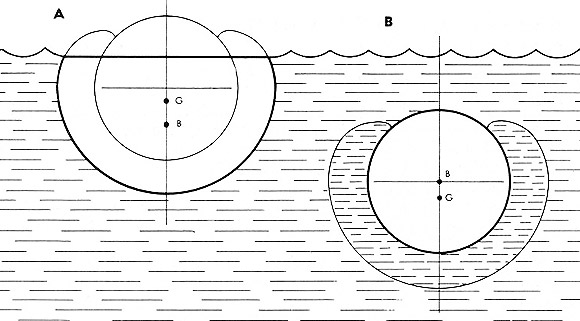DIVING AND SURFACING
The submarine achieves a dive by opening the vents and allowing the air to escape and water to fill the ballast tanks. The bow planes are lowered and angled down to drive the submarine below the surface. Once submerged, the boat is trimmed, or balanced, by pumping water between trim tanks. Over-all trim is the process of attaining neutral buoyancy; final trim is the establishment of fore and aft equilibrium, or zero bubble, with neutral buoyancy. The submerged submarine is operated at neutral buoyancy and control of the vessel is obtained by the rudder and the bow and stern diving planes. A zero bubble should be maintained without excessive angles on the diving planes. The primary effect of the bow planes is on the depth, and the primary effect of the stern planes is on the angle of the submarine. Negative buoyancy for a quick dive is achieved by flooding the negative tank which is located at the keel slightly forward of the center of the boat, adding a slight down angle to the submarine. The negative tank is blown free of water once submerged. Pressure on the hull increases with depth. The total pressure that the hull must be able to withstand is measured by the difference between interior hull pressure and the external pressure at a given depth. When the maximum depth is passed, the pressure hull will be crushed. Diving and Surfacing PhraseologyDiving ProceduresSurfacing ProceduresReturn to the Pampanito Technology page
|

